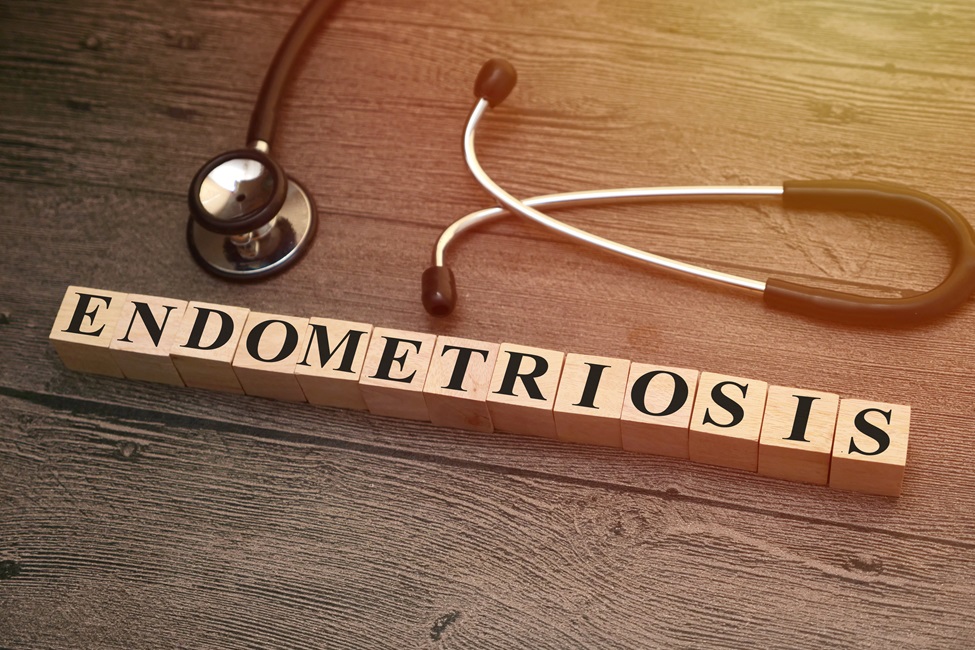Emerging Diagnostic Tools for Early Diagnosis of Endometriosis

Endometriosis is a common, burdensome, chronic disease that affects more than 11% of women of reproductive age in the United States and 190 million women worldwide. Early diagnosis remains a major clinical and public health challenge. The average time to diagnose endometriosis is seven years after the onset of symptoms, which include abdominal pain and cramping before, during and after menstruation, among others.
Endometriosis occurs when tissues normally found inside the lining of the uterus migrate and grow in other locations, most commonly the ovaries, fallopian tubes and other organs. These circumstances may cause life-altering consequences such as chronic pain, infertility and quality of life.
In a commentary published in The Journal of Reproductive Medicine, Gynaecology & Obstetrics, researchers from Florida Atlantic University’s Schmidt College of Medicine and collaborators, conducted a PubMed search to identify promising approaches for early diagnosis of endometriosis.
“Currently, diagnosing endometriosis involves a thorough review of the patient’s medical history and physical examination,” said Panagiota “Yiota” Kitsantas, Ph.D., first and corresponding author as well as professor and chair of the Department of Population Health and Social Medicine, FAU Schmidt College of Medicine. “The most commonly used and accurate diagnostic methods are pelvic exams, abdominal ultrasound, MRI and laparoscopy. Laparoscopic surgery is considered the gold standard for diagnosing endometriosis by gynecologists, but it can be expensive and carries potential risks of surgical complications. Moreover, the accuracy of laparoscopy can vary based on the surgeon’s experience and the stage of the disease.”
The authors say the ideal test for early diagnosis of endometriosis would be to use symptom-based criteria to determine who should undergo testing and then set optimal cut-points to maximize sensitivity and specificity. A test with high predictive value would accurately confirm endometriosis if positive and exclude it if negative. Although less ideal tests may not provide definitive results, they can be useful in reducing the number of patients who need to proceed to more invasive procedures, like laparoscopy.
Endometriosis involves hormonal imbalances that trigger angiogenesis, apoptosis, immune responses, and inflammation. Diagnostic tools for endometriosis have been developed to detect biomarkers, such as mRNA fragments in blood and saliva, but these have shown low accuracy.
“Non-invasive methods like MRI and transvaginal ultrasound are only effective for advanced stages of endometriosis,” said Charles H. Hennekens, M.D., co-author, the first Sir Richard Doll Professor of Medicine and Preventive Medicine in the Departments of Medicine and Population Health and Social Medicine and senior academic advisor, FAU Schmidt College of Medicine. “Recent research has focused on a novel noninvasive method of detecting myoelectric activity in the gastrointestinal tract as a potential diagnostic tool. Electroviscerography or EVG could detect unique myoelectric patterns associated with endometriosis, though this approach is promising but unproven.”
Currently, there is no FDA-approved non-invasive test for endometriosis, and further analytic studies leading to peer-reviewed publications are needed to refine these emerging technologies and establish effective diagnostic criteria.
“Early diagnosis of endometriosis remains a challenge, with a succession of promising approaches ultimately not bearing fruit thus far,” said Kitsantas. “Once new technologies such as EVG are more fully evaluated, they may give clinicians the post-test certainty they need to transition from symptom-based to diagnosis-based treatment.”
Co-authors are Katerina N. Benson, a pre-medical student at FAU; Sadine Al-Farauki, a recent FAU graduate and entering medical student at Ross University School of Medicine; Michelle Keba Knecht, senior medical librarian, FAU Schmidt College of Medicine; and Lee A. Learman, M.D., Ph.D., professor of obstetrics and gynecology and dean, Virginia Tech Carilion School of Medicine.
-FAU-
Latest Research
- VR Could be a Gamechanger in Police-Civilian Crisis EncountersAn FAU College of Social Work and Criminal Justice study immersed police officers in virtual reality training using a realistic mental illness scenario to enhance empathy and complement traditional training.
- STEM Teachers in High-need Schools Resilient Despite ChallengesAn FAU College of Education researcher collaborated on a study examining 30 years of STEM teacher trends, focusing on qualifications and changes in high-need, primarily high-poverty U.S. schools.
- Alcohol-Related Deaths in the U.S. More than Double from 1999 to 2020FAU researchers explored overall trends as well as by age, gender, race and region. The sharpest spike occurred among 25-34-year-olds (nearly fourfold), while individuals aged 55-64 had the highest rates.
- FAU REPORT: Consumers Face Elevated Prices Despite Waning InflationThe years of high inflation appear to be over as inflation is now in line with the Federal Reserve's target, though prices will likely remain permanently elevated, according to the Monthly Inflation Report.
- FAU Engineers Win NSF Grant for Unique School of AI Bio-Robotic FishA school of bio-robotic fish with advanced sensors will create a versatile network capable of maneuvers and station-keeping beyond current vehicles in shallow coastal areas and in deep ocean environments.
- FAU Poll: Presidential Race Tightens Across Key Battleground StatesLatest FAU polls reveal a highly competitive landscape in the battleground states of Michigan, Pennsylvania and Wisconsin, with both the presidential and U.S. Senate races showing narrow Democratic leads.






